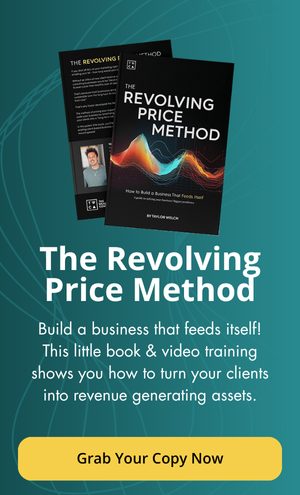Many years ago, I learned sales from a guy named Gary.
This would’ve been, ~2014.
I was writing copy for small business outfits at the time and despite my work being world class, I was struggling to get paying clients.
Gary told me one day, “It’s cause you suck at selling. Want me to show you how?”
Of course, I said I’d love that…
And he taught me consultative selling.
I have an extreme personality, I go “all in.” You’re probably the same way. High performers don’t like being capped at 80%… we are 100% or zero.
I took what Gary taught me and implemented it. In the next year, I probably had 100 phone calls where I used the consultative approach. From 2015 to 2021 — I built TEAMS of people who sold products, programs, services & offerings.
There are probably 700,000 calls tracked back to my organizations from 2015 to 2021 (in 2022, I slowed down and so I don’t have the data on it — you can read that story here).
Three Things to Buy
After 700,000 calls, you get a good feel for what really matters to people. To be read literally: you learn why people buy, and why they don’t.
There are three main things that must be present for you to move product as an educator/trainer/consultant:
- They believe they have a problem, or at the very least, an opportunity
- They believe they are personally capable of fixing the problem or taking advantage of the opportunity
- They believe you (or your product) will aid them or quicken them to the end result
That’s it…
Everything else is terms & details.
The toughest, and longest, part to “hack” in this list of 3 is number two. Let me give you an example of how to go about fixing this…
When most people use testimonials, they’re tackling #3. They’re trying to prove that the product works and that it will do what you say it will do.
But I actually think that’s a missed opportunity and an improper way to use testimonials.
The product should sell itself off its own logical merit.
Think of a software or new technology — as long as you show what it does and how it dow it, you’re good. The consumer can make a logical conclusion as to whether they want to risk the time & bandwidth to utilize it.
And make no mistake, everything is a risk.
There are a lot of children on the internet with ad accounts right now, trying to completely “de-risk” deals using guarantees and such. In investing, a deal that is “completely de-risked” 100% is called a scam. Nothing’s ever, truly, risk free…
The proper way, in my opinion, to use testimonials is actually to aid in #2 (they believe they are personally capable of fixing the problem or taking advantage of the opportunity).
When we look at testimonials, we are looking for versions of ourselves who have already used the product.
One of my early mentors, Ryan Levesque, created something called the “Survey Funnel.” You answer some questions, and it customizes the types of material you see based on your answers. This is a near-perfect strategy because it ensures the prospect sees a version of themselves when they view the final material.
Anywhooo…
This is all top of mind because today I’m teaching some private clients how to use a “MODELS” based selling approach I am pioneering. It’s working amazingly well — easily as revolutionary as Gary’s consultative selling approach in 2014…
We’re sold out on private client spots for the month, and almost sold out for next month as well.
Dang clients just don’t leave once they’re in 🙂
And we never take clients past our capacity to fulfill…
If you are interested in how this model works, though, here’s a nifty training for you that will whet your appetite and hold you over until we have spots open up.

